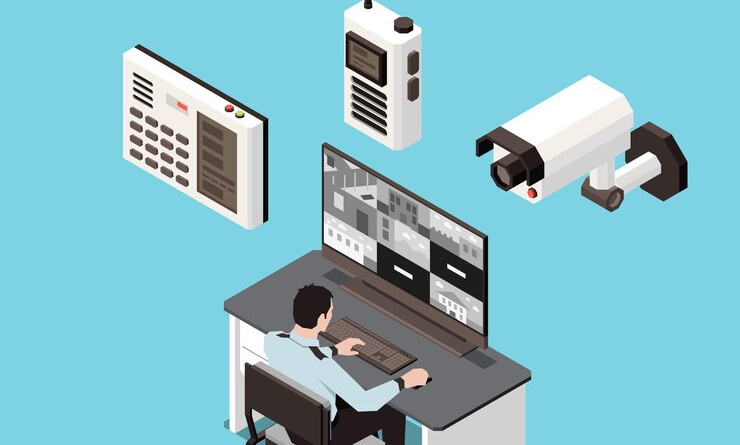6- Steps For Increasing Your Office Security
Keeping your office safe and secure can be a daunting task. The office is the main centre of your business, where you can store essential information. It is also where you and your colleagues spend most of the working hours. Therefore, creating a safe environment that will protect you from significant disruptions, liability or data loss concerns, and staff insecurity problems is necessary.
Here are six cost-efficient and effective ways to keep your office and workplace safe and secure.
Implement a badge system.
Installing a badge system is an effective and simple method to improve workplace security by regulating access to physical spaces. This system allows employees and visitors to access specific spaces or resources through key cards, phones, or ID badges.
Additionally, this system can limit physical access as necessary.
Badges can range from basic, allowing access to parking garages or buildings, to complex, controlling access to specific departments, floors, private rooms, or other assets. A well-designed system can ensure that sensitive data is only accessible to authorised users.
Implement Access Control Systems
Access control systems are a vital component of office security. You can efficiently keep the workplace secure by controlling who has access to particular building parts. An efficient access control system is capable of the following:
- Limit illegal personnel from entering sensitive areas
- Monitor movement within the office building
- Avoid stealing and misuse of business property
You should invest in cutting-edge equipment like keycard- or biometric-controlled entry points. Moreover, you can decide who has access, where it is granted, and when it is given with different access levels.
Install a CCTV system.
A Commercial Security System Camera is an effective device for boosting office security. It serves as an immediate visual deterrent to any potential wrongdoer and can record any unusual activity. So, make sure you follow the latest industry standards and consider covering less visible areas like back alleys, garages, or corridors outside the main office space.
Install Conventional fire alarm systems.
Conventional fire alarms connect each initiating piece of equipment to the control panel through a separate wire and can be set up in zones. Upon activation, the device pinpoints the zone of an initiating piece, helping to focus the fire’s location.
For example, if a building has five floors and each level is divided into a zone, the site of the fire can be identified based on the activated zone. This fire alarm doesn’t provide a precise location but gives a general notion of the fire’s position.
Moreover, conventional fire alarm systems are more simple and affordable, making them suitable for smaller office spaces.
Train your employees
When it comes to security, your employees are your best allies. Your office’s security is dependent on the level of awareness, vigilantes, and commitment to maintaining its safety.
Therefore, you should train your workers in your office’s safety procedures. This includes teaching them how to keep things safe, minimize risks, and handle any instances of fraud. This will improve your office’s cohesion and strengthen the security on your premises.
Make Emergency and evacuation plans.
Next, you’ll need to make a plan for handling emergencies. These can be natural disasters, such as earthquakes and snow storms, or external hazards. Create a plan that includes evacuation procedures and emergency contact information.
Employee scheduling software lets you know exactly how many people are present on location. You can rapidly pull that information and visitor check-in data to determine how many people need to be evacuated from the building. With seamless integrations, you can send an emergency message to everyone filmed on location.



